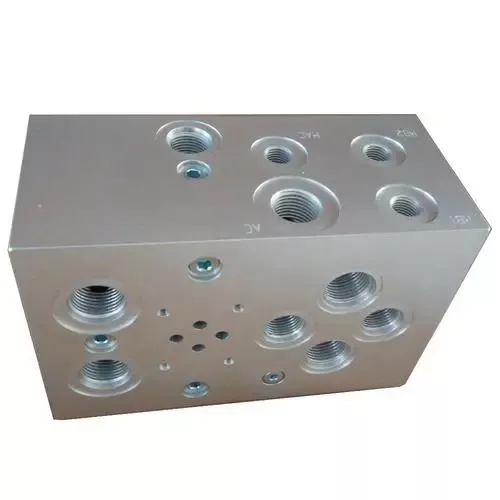Key Considerations for Choosing a Hydraulic Manifold
Choosing the right hydraulic manifold can be a daunting task, but with some key factors considered, it soon becomes an achievable goal. The following discusses each factor that needs to be considered in-depth.
flow rate: The flow rate of a hydraulic manifold is essential for its proper functioning. Therefore, when choosing a manifold, it is necessary to consider the required flow rate of the system it will serve. Selecting a manifold with insufficient flow capabilities can negatively impact the overall system performance, leading to mechanical inefficiencies and other issues.
Pressure Rating: As essential as flow rates are to hydraulics, pressure ratings are also essential. Every hydraulic system operates at a specific pressure range, which mustn't be exceeded. Therefore, you should ensure that the manifold pressure rating aligns with your system's maximum operating pressure. When components operate under higher pressures than recommended, numerous issues arise, including seal failures, damage to hydraulic pumps, and Pressure Reducing Valves. All these issues can be costly and disruptive to production.
Number and Size of ports: The number of ports needed on a hydraulic manifold depends on the requirements of the hydraulic system; therefore, choosing a manifold with the correct number of ports assures optimal functionality. Each port should correspond to a different hydraulic component, using the correct size port for each component level for optimal effectiveness. When a port is too small, high pressure drop may occur, and when a port is too big, the system may lose effort, or air pockets will form in the system. A properly selected manifold results in optimal system performance.
configuration: Manifold configuration is crucial in hydraulic system design. There are mainly two types of configuration to consider, i.e., inline and subplate manifolds. Inline manifolds consist of several ports placed on a single plane. They are easier to install, have a smaller footprint, and more cost-effective. On the other hand, Subplate systems allow mounting multiple valve stacks across different planes, leading to a more flexible system design. For instance, when working with large hydraulic equipment, the subplate arrangement is the preferred configuration considering aspects such as component accessibility.
Saivs brand
- Counterbalance Valves CBCG
- Hydraulic cylinder for Seeder
- sai gm4 hydraulic motor radial hydraulic motor and hydraulic hoist motor oil pump
- A2F5-1000 Rexroth Hydraulic Pump Parts
- poclain ms05 mse05 radial piston hydraulic motor with/without brake
- A4V40~250/A4VFO28/A4VSO40~500 Rexroth Hydraulic Pump Parts
- Aerial work platform outrigger hydraulic cylinder
- ms08/mse08 - sourcing poclain hydraulic piston motor supplier from china
- Gear pumps sertes nsh32a
- Scissor Table Lift
